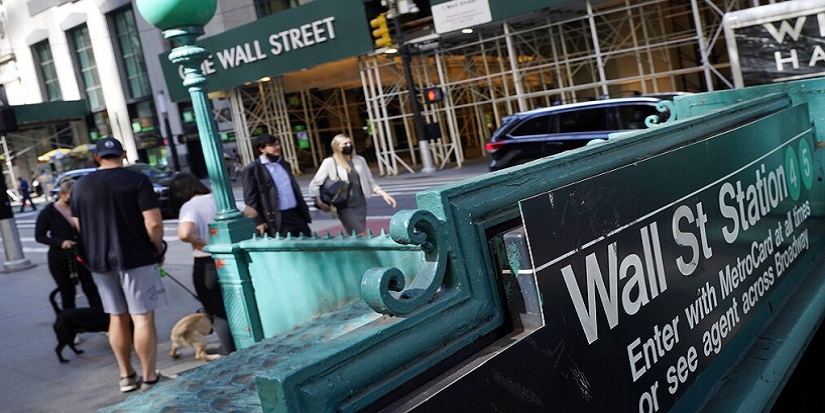
How the Sausage Is Made
-
 Jared Dillian
Jared Dillian
- |
- May 19, 2022
- |
- Comments
In 2011, when my book Street Freak came out, a few copies got passed around the local community here in Myrtle Beach. There was an elderly man in town, who was a stock hobbyist, who read the book. Here was his review: “Those guys are freaking crazy!” After that, he lost his taste for trading stocks. He passed away a few years ago, unfortunately.
Eighty percent of USDA chicken inspectors no longer eat chicken. I feel pretty much the same way about the stock market, having worked in it for nine years. Once you know how the plumbing of the capital markets works, with all the personalities and potential for bad behavior, you kind of lose your enthusiasm for investing.
There are lots of retail investors (and people marketing newsletters) who tell you the “system” is “rigged” against “the little guy” and all you have to do is pay $99 a year to find out how the average Joe is beating the market. Well, there is no need to pay $99 for that. You simply buy and hold. Wall Street can’t hurt you if you don’t trade, and the more you trade, the more it can hurt you.
|
[ANNOUNCEMENT] JARED DILLIAN’S STRATEGIC PORTFOLIO is now accepting new members. New Member Coupon Code has been applied on the order form linked here. |
Sitting on a facilitation desk, I can tell you that the goal of Wall Street is to rip your face off and get you to walk away thinking you got a good fill. Hey, that doesn’t seem like such a bad price. But you don’t know what’s happening on the other side of the trade. Wall Street isn’t in the business of altruism, and even if it loses money on a single trade or a handful of trades, it will make it up in the aggregate. And if a customer is sharp enough to be truly unprofitable for a bank, they’ll find their calls won’t get answered, and they’ll have to bring their toxic business to another bank, much like the casinos do to card counters. You’re allowed to play, but you’re not allowed to win.
This is not only true at the institutional level, but also at the retail level. But no retail customer is large enough to do any lasting damage to a retail brokerage (or a market maker who is paying for their flow), with the possible exception of Roaring Kitty who bought enough upside gamma in GameStop (GME) to leave a dent in HFT profits. Really, how Wall Street picks the pockets of retail investors is in fractions of a penny at a time—so small that you wouldn’t notice.
Believe it or not, this represents progress. Lots of people are currently unhappy with our fragmented market microstructure, with the nineteen-odd different exchanges, but this is far better than having one clearinghouse for trades and one human specialist that decided where everyone got filled. Twenty years later, and nobody remembers the NYSE trading scandal. That made people believe computers would be more fair. And they are. But people still aren’t happy. Instead of the evil specialists, we have evil computers. Believe me, this is far better.
The blame should be assigned to the evil government and the evil exchanges and the evil Federal Reserve. Collectively, they’ve done more to harm market liquidity than any high frequency trader could. Now, transactions costs in the form of commissions have effectively been brought to zero—by the private sector. But bid-ask spreads have been widening for the last 10 years, to the point that execution quality is back to where it was when we were trading in fractions. In fact, to improve liquidity, we should go back to fractions—too-small tick size is a big part of it. The problem is that the incentives to display liquidity—post bids and offers—have basically disappeared. There is liquidity, but you can’t see it, and that’s not a symptom of a healthy market.
But overall, we have it pretty good here in the United States if all we’re concerned about is fractions of a penny. In my early days of trading EWZ, I thought about hedging with Bovespa futures in Sao Paulo, until I found out those guys would sit on your order and fill you 10 handles lower. I decided to go without a hedge. Likewise with trading BBH, what was then the Biotech HOLDRs ETF. The index was predominantly Genentech, and the Genentech specialist would flee form orders of any size. I heard later that he was head of the ethics committee on the exchange.
You are probably better off not knowing how any of this works. Put in your order on the app and hit “send,” and try not to think about it. Trust me, you’re getting ripped off a lot worse by your contractor. We get pissed about some things and don’t care about others. We want mutual fund expense ratios to be zero, but we’ll willingly pay 20% credit card interest rates. Save the outrage for something else. There’s no such thing as a perfect system.

Jared Dillian
subscribers@mauldineconomics.com

 Jared Dillian
Jared Dillian